Sotalol hydrochloride
Synonym(s):(±)-Sotalol hydrochloride;N-[4-[1-Hydroxy-2-(isopropylamino)ethyl]phenyl]methanesulfonamide hydrochloride
- CAS NO.:959-24-0
- Empirical Formula: C12H21ClN2O3S
- Molecular Weight: 308.82
- MDL number: MFCD00242937
- EINECS: 213-496-0
- SAFETY DATA SHEET (SDS)
- Update Date: 2024-04-15 15:30:59

What is Sotalol hydrochloride?
Description
Sotalol is a non-selective antagonist of β-adrenergic receptors (β-ARs; IC50s = 8.9 and 5.2 μM for β1- and β2-ARs, respectively) and a class III antiarrhythmic agent. It decreases delayed outward potassium currents (IK) in guinea pig ventricular cells and prolongs action potential duration in electrically stimulated isolated guinea pig papillary muscles when used at a concentration of 100 μM. Sotalol decreases heart rate and increases blood pressure and the cardiac functional refractory period (FRP) in a canine model of ventricular tachycardia induced by programmed electrical stimulation (PES). Formulations containing sotalol have been used in the treatment of ventricular arrhythmias and maintenance of normal sinus rhythm in patients with atrial fibrillation or flutter (AFIB/AFL).
Description
Sotalol (hydrochloride) (Item No. 26291) is an analytical reference standard categorized as a β-adrenergic receptor antagonist. It has been detected as an adverse analytical finding (AAF) during anti-doping testing. This product is intended for use in analytical forensic applications. This product is also available as a general research tool .
Chemical properties
White Crystalline Solid
Originator
Sotagard,Glaxo
The Uses of Sotalol hydrochloride
Sotalol hydrochloride is used as a potent beta adrenergic antagonist, prolongs the action potential and increases the refractory period. Sotalol hydrochloride is also considered a non-selective β blocker and a potassium channel blocker with an IC50 of 43 μM.
The Uses of Sotalol hydrochloride
A potent -adrenergic receptor antagonist. A class III antiarrythmic. It has been shown to prolong action potential and increases the refractory period
The Uses of Sotalol hydrochloride
A potent α-adrenergic receptor antagonist. A class III antiarrythmic. It has been shown to prolong action potential and increases the refractory period.
The Uses of Sotalol hydrochloride
antibacterial
What are the applications of Application
Sotalol hydrochloride is a potent β adrenergic antagonist
Definition
ChEBI: A hydrochloride salt that is the monohydrochloride of sotalol. It has both beta-adrenoreceptor blocking (Vaughan Williams Class II) and cardiac action potential duration prolongation (Vaughan Williams Class III) antiarrhythmic properties. It is used (usually as the hydrochloride salt) for the management of ventricular and supraventricular arrhythmias.
Manufacturing Process
As a resulting of reaction of methansulfonylchloride reacted with aniline
methansulfonanilide was obtained. The methansulfonanilide reacted with
bromacetylbromide at the presence of AlCl3 and CS2 and 4-(bromacetyl)-
methansulfonanilide was prepeared.
Then to the 4-(bromacetyl)-methansulfonanilide isopropylamine was added to
give 4-(1-oxo-2-isopropylaminoethyl)methansulfonanilide.The 4-(1-oxo-2-isopropylaminoethyl)methansulfonanilide was reduced by
hydrogenesation in the presence of Pd-C catalyst and sodium borohydride. So
4-(1-hydroxy-2-isopropylaminoethyl)methansulfonanilide was obtained.
The 4-(1-hydroxy-2-isopropylaminoethyl)methansulfonanilide hydrochloride
may be prepared by treatment of base with hydrochloric acid.
brand name
Betapace(Berlex); Sorine (Upsher Smith).
Therapeutic Function
Beta-adrenergic blocker, Antiarrhythmic
Biological Activity
A relatively potent pure β adrenergic antagonist, unique in possessing additional class III antiarrhythmic activity. Also available as part of the Mixed Adrenergic Tocriset™ .
Clinical Use
Beta-adrenoceptor blocker:
Treatment of life-threatening ventricular
arrhythmias
Prophylaxis of SVT
Veterinary Drugs and Treatments
Sotalol may be useful in the treatment of ventricular tachycardias and, possibly, supraventricular tachycardias in dogs.
Drug interactions
Potentially hazardous interactions with other drugs
Anaesthetics: enhanced hypotensive effect.
Analgesics: NSAIDs antagonise hypotensive effect.
Anti-arrhythmics: increased risk of myocardial
depression and bradycardia; increased risk ofbradycardia, myocardial depression and AV block
with amiodarone; increased risk of ventricular
arrhythmias with amiodarone, dronedarone,
disopyramide or procainamide - avoid; increased
risk of myocardial depression and bradycardia with
flecainide.
Antibacterials: increased risk of ventricular
arrhythmias with moxifloxacin - avoid; increased
risk of ventricular arrhythmias with delamanid.
Antidepressants: enhanced hypotensive effect with
MAOIs; increased risk of ventricular arrhythmias
with tricyclics; increased risk of ventricular
arrhythmias with citalopram, escitalopram and
venlafaxine - avoid.
Antihistamines: increased risk of ventricular
arrhythmias with mizolastine - avoid.
Antihypertensives: enhanced hypotensive effect;
increased risk of withdrawal hypertension with
clonidine; increased risk of first dose hypotensive
effect with post-synaptic alpha-blockers such as
prazosin.
Antimalarials: increased risk of bradycardia with
mefloquine; avoid with artemether and lumefantrine
and piperaquine with artenimol - increased risk of
ventricular arrhythmias.
Antimuscarinics: increased risk of ventricular
arrhythmias with tolterodine.
Antipsychotics: enhanced hypotensive effect with
phenothiazines; increased risk of ventricular
arrhythmias with amisulpride, droperidol,
haloperidol, phenothiazines, pimozide, risperidone,
sulpiride or zuclopenthixol - avoid with droperidol
and zuclopenthixol.
Antivirals: increased risk of ventricular arrhythmias
with saquinavir or telaprevir - avoid.
Atomoxetine: increased risk of ventricular
arrhythmias.
Calcium-channel blockers: increased risk of
bradycardia and AV block with diltiazem;
hypotension and heart failure possible with
nifedipine and nisoldipine; asystole, severe
hypotension and heart failure with verapamil.
Cytotoxics: possible increased risk of bradycardia
with crizotinib; increased risk of ventricular
arrhythmias with vandetanib - avoid; increased risk
of ventricular arrhythmias with arsenic trioxide,
bosutinib, ceritinib, panobinostat and vandetanib.
Diuretics: enhanced hypotensive effect; increased risk
of ventricular arrhythmias due to hypokalaemia.
Fingolimod: possibly increased risk of bradycardia.
Ivabradine: increased risk of ventricular arrhythmias.
Moxisylyte: possible severe postural hypotension.
Ranolazine: avoid concomitant use.
Sympathomimetics: severe hypertension with
adrenaline and noradrenaline and possibly with
dobutamine.
Metabolism
Metabolism of sotalol is negligible, and it is excreted unchanged in the urine.
storage
Store at RT
Properties of Sotalol hydrochloride
| Melting point: | 218-220°C |
| storage temp. | 2-8°C |
| solubility | H2O: 20 mg/mL |
| form | powder |
| color | white to off-white |
| Water Solubility | Soluble in phosphate buffered saline, DMSO, ethanol, water, and methanol. |
| CAS DataBase Reference | 959-24-0(CAS DataBase Reference) |
Safety information for Sotalol hydrochloride
| Signal word | Warning |
| Pictogram(s) |
 Exclamation Mark Irritant GHS07 |
| GHS Hazard Statements |
H303:Acute toxicity,oral H315:Skin corrosion/irritation H319:Serious eye damage/eye irritation H335:Specific target organ toxicity, single exposure;Respiratory tract irritation |
| Precautionary Statement Codes |
P261:Avoid breathing dust/fume/gas/mist/vapours/spray. P304+P340:IF INHALED: Remove victim to fresh air and Keep at rest in a position comfortable for breathing. P305+P351+P338:IF IN EYES: Rinse cautiously with water for several minutes. Remove contact lenses, if present and easy to do. Continuerinsing. P405:Store locked up. |
Computed Descriptors for Sotalol hydrochloride
Abamectin manufacturer
New Products
4-AMINO-TETRAHYDRO-PYRAN-4-CARBOXYLIC ACID HCL 4-(Dimethylamino)tetrahydro-2H-pyran-4-carbonitrile 4-Aminotetrahydropyran-4-carbonitrile Hydrochloride (R)-3-Aminobutanenitrile Hydrochloride 3-((Dimethylamino)methyl)-5-methylhexan-2-one oxalate 1,4-Dioxa-8-azaspiro[4.5]decane 5-Bromo-2-nitropyridine Nimesulide BP Aceclofenac IP/BP/EP Diclofenac Sodium IP/BP/EP/USP Mefenamic Acid IP/BP/EP/USP Ornidazole IP Diclofenac Potassium THOMAIND PAPER PH 2.0 TO 4.5 1 BOX BUFFER CAPSULE PH 9.2 - 10 CAP SODIUM CHLORIDE 0.1N CVS ALLOXAN MONOHYDRATE 98% PLATINUM 0.5% ON 3 MM ALUMINA PELLETS (TYPE 73) LITHIUM AAS SOLUTION 2-Bromo-1-(bromomethyl)-3-chloro-5-nitrobenzene 2-Bromo-3-nitroaniline N-(3-Hydroxypropyl)-N-methylacetamide 3-Bromo-6-chloropyridazine 4-ethyl-3-nitrobenzoic acidRelated products of tetrahydrofuran
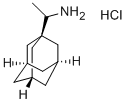
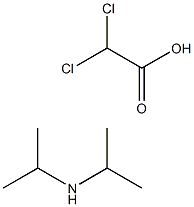

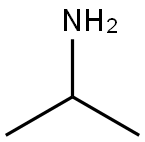
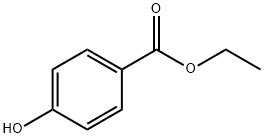
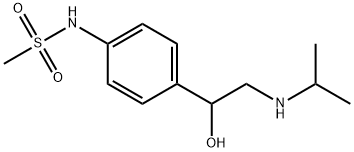


You may like
-
 Sotalol HCl 95.00% CAS 959-24-0View Details
Sotalol HCl 95.00% CAS 959-24-0View Details
959-24-0 -
 Sotalol HCl >98% (HPLC) CAS 959-24-0View Details
Sotalol HCl >98% (HPLC) CAS 959-24-0View Details
959-24-0 -
 (±)-Sotalol hydrochloride CAS 959-24-0View Details
(±)-Sotalol hydrochloride CAS 959-24-0View Details
959-24-0 -
 Sotalol Hydrochloride CAS 959-24-0View Details
Sotalol Hydrochloride CAS 959-24-0View Details
959-24-0 -
 Sotalol hydrochloride CAS 959-24-0View Details
Sotalol hydrochloride CAS 959-24-0View Details
959-24-0 -
 Sotalol hydrochloride 98%View Details
Sotalol hydrochloride 98%View Details -
 959-24-0 98%View Details
959-24-0 98%View Details
959-24-0 -
 Lithium ClavulanateView Details
Lithium ClavulanateView Details
61177-44-4